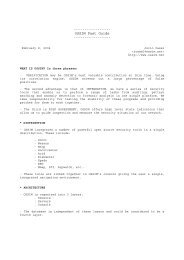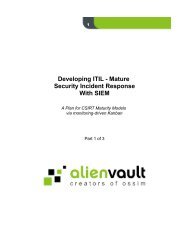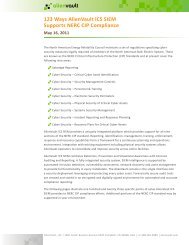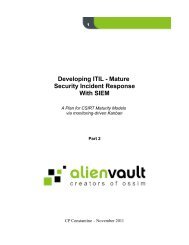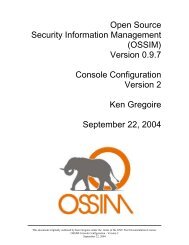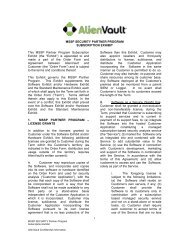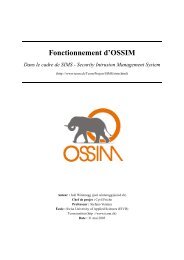ossim - AlienVault
ossim - AlienVault
ossim - AlienVault
Create successful ePaper yourself
Turn your PDF publications into a flip-book with our unique Google optimized e-Paper software.
3.4 Prioritization<br />
The priority of an alert should depend on the topology and inventory of the organization’s<br />
systems. The reasons are quite clear, as demonstrated by the following examples:<br />
a. If a machine running the UNIX operating system and Apache web server receives<br />
an alert about an attack on Microsoft IIS, the alert should be deprioritized.<br />
b. If a user makes a suspicious connection to a server, the system should:<br />
o Give it maximum priority if the user is external to the network and attacking<br />
the client database.<br />
o Give it low priority if the user is internal to the network and attacking a<br />
network printer.<br />
o Discard it if the user is someone who normally tests development servers.<br />
By prioritization we mean the process of contextualization, in other words, the evaluation of an<br />
alert’s importance in relation to the organization’s environment, which is described in a<br />
knowledge base for the network comprised of:<br />
• An inventory of machines and networks (identifiers, operating systems, services,<br />
etc.)<br />
• An access policy (whether access is permitted or prohibited, and from where to<br />
where)<br />
To perform these tasks (as in risk assessment, as explained in the following section), we have a<br />
framework in which we can configure the following:<br />
1. Security policy, or assessment of asset-threat pairs according to topology and data<br />
flow<br />
2. Inventory<br />
3. Asset assessment<br />
4. Risk assessment (prioritization of alerts)<br />
5. Assessment of the reliability of each alert<br />
6. Alarm definition<br />
Prioritization is one of the most important steps in filtering alerts received by detectors and<br />
should be executed using a continuous process of fine-tuning and feedback from the<br />
organization.<br />
14



